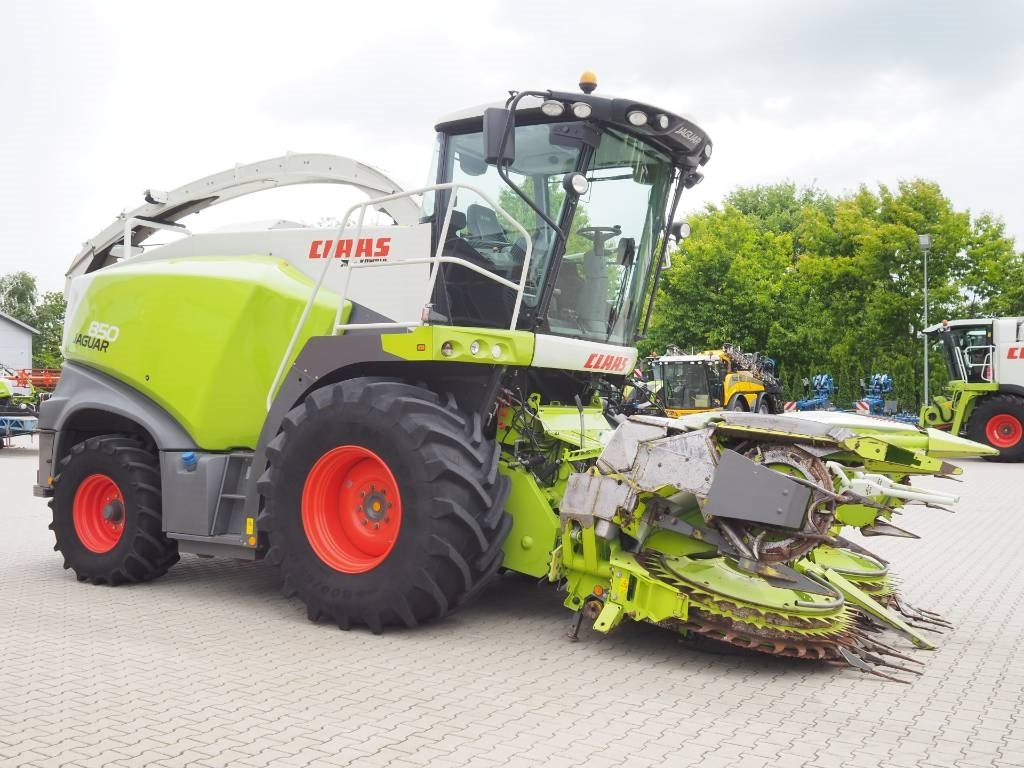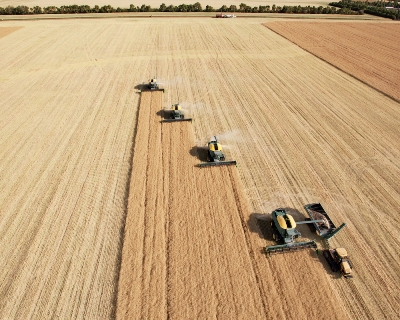Forage harvestersSeller's country: Poland: Podlaskie, Wielkopolskie





Claas Jaguar 840 + Orbis 450
126 000EUR
- ≈ 144 873 USD
- ≈ 107 826 GBP





Claas Jaguar 840 + Kemper 345 Plus
132 000EUR
- ≈ 151 772 USD
- ≈ 112 961 GBP





Claas Jaguar 840
99 000EUR
- ≈ 113 829 USD
- ≈ 84 720 GBP





Claas Jaguar 870 4WD
205 000EUR
- ≈ 235 706 USD
- ≈ 175 432 GBP
4 million buyers per month search for vehicles and machinery on Truck1.





Claas PICK UP 300 HD
6 500EUR
- ≈ 7 473 USD
- ≈ 5 562 GBP





Claas Jaguar 850 + Kemper 445
125 000EUR
- ≈ 143 723 USD
- ≈ 106 970 GBP





Claas Jaguar 850 + Orbis 450
120 000EUR
- ≈ 137 974 USD
- ≈ 102 692 GBP





Claas Jaguar 950 4WD + Orbis 750
205 000EUR
- ≈ 235 706 USD
- ≈ 175 432 GBP





Claas Jaguar 860 4WD
240 000EUR
- ≈ 275 949 USD
- ≈ 205 384 GBP




Sieczkarnia do kukurydzy BIG DRUM 2200
40 348EUR
Price excl. VAT
- ≈ 46 391 USD
- ≈ 34 528 GBP

Welcome to the forage harvester category of Truck1.eu, your go-to platform for buying agricultural machinery. Here, we provide an expansive collection of new and used forage harvesters for sale to cater to your specific needs. Let's delve deeper to understand what these machines are and their applications.
A forage harvester, also known as a silage harvester, is a farm implement used to harvest forage plants to make silage. Silage is fermented, high-moisture stored fodder that can be fed to cattle, sheep, and other ruminants or used as a biofuel feedstock for anaerobic digesters.
Applications
Forage harvesters are versatile and can operate in a range of environments. They are primarily used in fields with corn and grass crops. The machine's adaptability to diverse terrains makes it a valuable addition to any agricultural operation.
Types of Forage Harvesters
The two main types of forage harvesters are:
- Self-propelled harvesters – Independent machines with their own engine and mobility.
- Tractor-mounted harvesters – Attached to a tractor and powered by its PTO (Power Take-Off).
Both types have similar structural features including a cutting unit, a processing unit, and a discharge spout. The cutting unit slices through crops, the processing unit chops and conditions the forage, and the discharge spout directs the processed forage into a wagon.
Key Specifications to Consider
When looking to buy a forage harvester, consider factors such as horsepower, cutting width, kernel processor, and efficiency. The horsepower determines the machine's capacity to handle heavy loads, while the cutting width affects its productivity. The kernel processor's quality influences the forage's nutritional value. Efficiency in fuel consumption and maintenance can also impact the overall cost of ownership.
Pricing and Market Trends in Europe
The forage harvester price varies depending on factors such as brand, model, year of manufacture, and overall condition. New machines typically cost more, but offer the latest technology and minimal wear and tear. Used forage harvesters, on the other hand, are more affordable and can provide excellent value if well-maintained. Regional trends also influence prices, with higher demand often leading to increased costs.
Popular Brands and Models
- John Deere: 8000 Series
- New Holland: FR Series
- Claas: Jaguar Series
- Krone: Big X Series
- Fendt: Katana Series
Buy Forage Harvesters on Truck1
At Truck1.eu, we offer a wide range of forage harvesters for sale from verified dealers. Our advanced search filters make it easy to find the perfect machine to meet your needs. If you're unable to find what you're looking for, use our "I'm looking for" form and we'll do our best to assist you.
FAQ
What is the lifespan of a forage harvester?
The lifespan of a forage harvester depends on several factors, including the brand, model, how it is used, and how well it is maintained. However, with regular maintenance, many harvesters can last for 10 to 15 years or more.
Can a forage harvester be used on all crop types?
While forage harvesters are primarily used on corn and grass crops, they can be adapted for use on other crops. The suitability of a harvester for a specific crop type may depend on the machine's specifications and the attachments used.
What are the maintenance requirements for forage harvesters?
Regular maintenance of a forage harvester includes cleaning, lubricating, and checking the cutting unit, processing unit, and discharge spout for wear. Periodic servicing by professionals is also recommended to ensure optimal performance.

